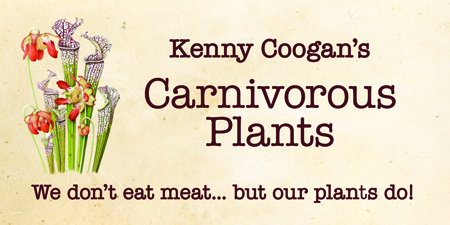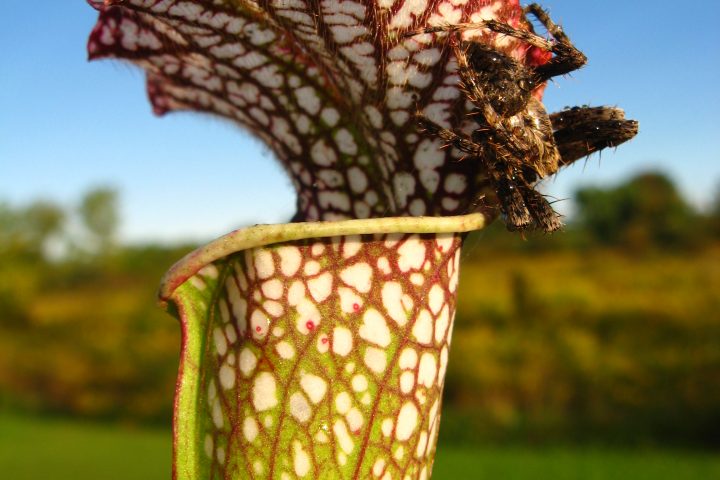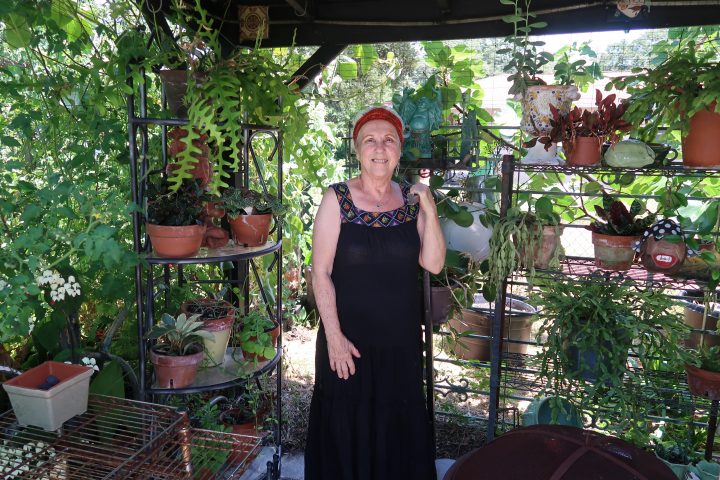Jazz is a culmination of American philosophy and musical styles. Started in the early 1900s, jazz is the quintessential music of the U.S. From its origins in New Orleans and through its many variations, jazz remains a trademark of American culture. Gardens and jazz both elicit emotions. Think about how Louis Armstrong, Duke Ellington, Ella Fitzgerald and Billie Holiday can augment your mood. If you’re feeling the blues jazz up your garden by adding a little syncopation in your flowerbeds by adding these groovy plants.
Musical Note Clerodendrum
Strike a chord with musical note Clerodendrum. Clerodendrum incisum is a perennial in USDA Zones 9-11 and grows like a shrub. In colder Zones, it can be grown as an annual or kept as a houseplant. I have recently seen it at many plant sales, with my neighbor purchasing one. I then happily received a cutting for my own yard.
The flower buds resemble musical notes, and droop ever so delicately, like notes on a staff. This plant is low maintenance, but cannot tolerate cold temperatures – just like most Floridians. In the fall it will lose its vegetation and slowly grow light green leaves in the late spring. When mature the plants reach heights between three and five feet and spread four to five feet. Do not prune during blooming season. It does best in moist, rich, but well drained soil in full sun or part shade. In Tampa it does better in shade.

Trumpet Section
Every jazz band needs a horn section. Golden trumpet (Allamanda cathartica) is a tropical evergreen vine or shrub that is winter hardy to USDA Zones 10-11. If growing as a vine, it must be trained. The plant does not twine or have tendrils. As a vine it can reach 20 feet. It can also be pruned to grow as a shrub. It does best in full sun and will bloom throughout the summer until a frost.
Blue trumpet vine would look great near golden trumpet. Also known as blue sky vine (Thunbergia grandiflora) produces 3-inch blue-purple flowers. This vine does well in the heat and full sun. The flowers are attractive to bees and other pollinators.
Devil (Datura) and angel trumpets (Brugmansia) provide beautiful pendulous flowers that hang like bells. The catch is that they contain dangerous levels of poison and may be fatal if ingested by humans or animals. But they are so beautiful! Especially if your jazz garden is also going to be a night garden as well. The trumpet shaped fragrant flowers smells great at night and nothing beats a plant loaded with flowers. The color varieties can fit into any garden theme, choose from black-purple to orange, pink, white and yellow.
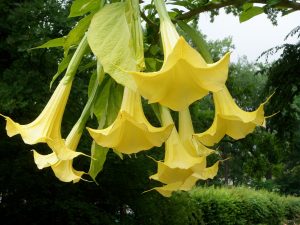

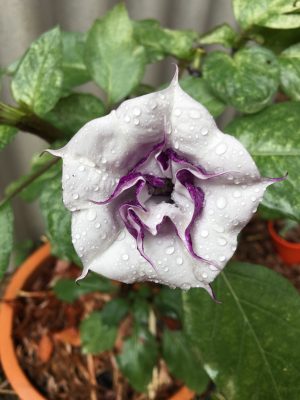
Trumpet vine or trumpet creeper (Campsis radicans) is a dense, vigorous, multi-stemmed, clinging vine that attaches itself to structures and climbs by aerial rootlets. The question is not usually how to grow them, but how to restrain them! The vine climbs with aerial roots which can damage brick and stucco. It is best to grow the vine on trees, poles, trellises, or similar structures. Hummingbirds love the flowers. It is also the larval host for the plebeian sphinx (Paratraea plebeja) moth.
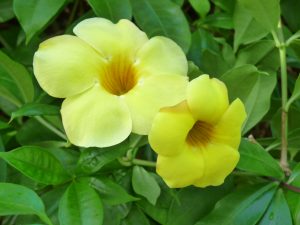
On the cover of the FG July/August 2017 there was a carnivorous plant, Sarracenia leucophylla also known as a fiddler’s trumpet. This plant would look great in the forefront of a jazz themed garden. Adding a decorative metal tub or basin would make this bog plant happy. In return it would snack on a few insects as you sit and relax to Dixieland jazz.
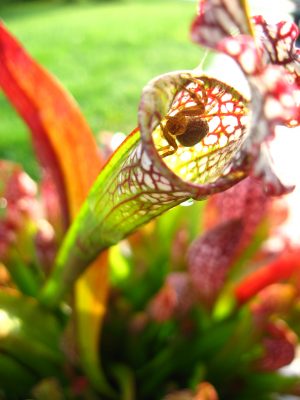
In addition to the pitcher plant, adding a trumpet lily (Zantedeschia aethiopica) in the wet jazz themed area would be another great centerpiece. This is the most familiar calla and grows to 3-foot-tall and 2-foot-wide. The large white flowers can grow up to 10 inches. While most are white, various cultivars are available. This plant can be grown as a marginal aquatic.Bugleweed (Ajuga reptans) is great for small spaces, containers, and rock gardens. It would grow as a thick groundcover in the front of your jazzed-up garden. It can also be planted on slopes, under trees or around shrubs. While not suitable for walking on, it has the advantage of choking out weeds.
Variety is the Spice of Life
For a colorful annual try Dianthus ‘Pink Melody’. It was bred specifically for use as a cut flower. With one-inch flowers that have a serrated petal edge this flower gives off an old-fashioned lacy look. ‘Melody Pink’ will mature at a mid-size garden height of 22-24 inches. ‘Melody Pink’ is quite heat and cold tolerant offering gardeners many months of flowering. The sprays of pink flowers are as attractive in a jazz garden as they are in floral arrangements.

Chinese fringe-flower (Loropetalum chinense) does best in moist, well-drained, acidic soil. It makes the Jazz list due to a whole string of varieties which revolve around the name Jazz Hands. There’s Jazz Hands; mini, bold, dwarf pink, dwarf white and variegated. Jazz Hands Variegated is the most popular seller due to its unique characteristics and Jazz Hands Bold has larger than typical flowers. Fertilize in spring. Pruning is seldom needed, but may be shaped after flowering. Hope you are inspired to plant a swinging themed garden this year.
To learn more about homesteading check out my newest book: 99½ Homesteading Poems
 Originally published in Florida Gardening Magazine Winter 2018.
Originally published in Florida Gardening Magazine Winter 2018.
